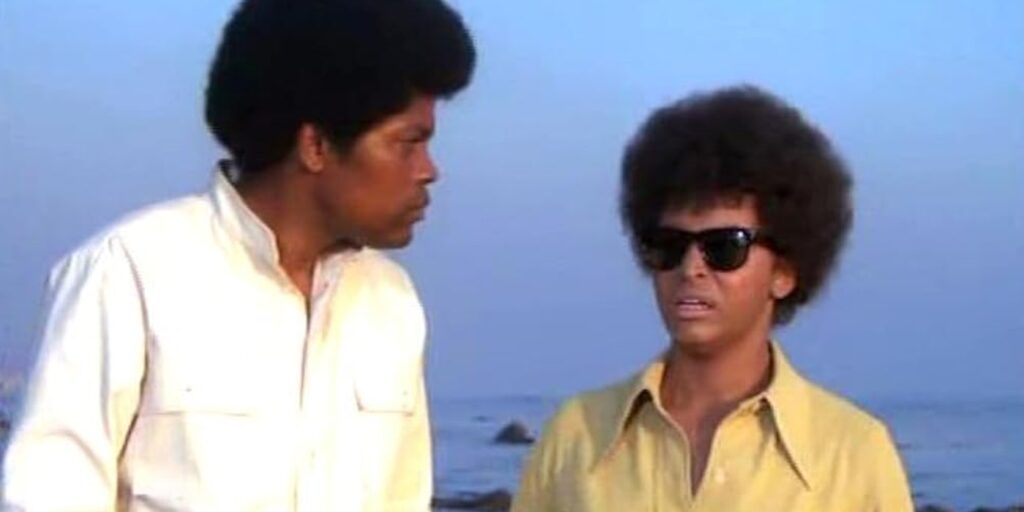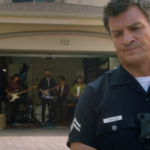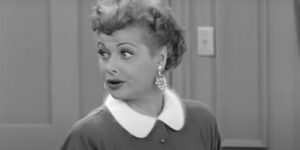
Today, we spotlight a tense episode of The Mod Squad spotlighting the great Gloria Foster, playing a blind woman who is the target of killers.
This is “All the Best Things,” a spotlight on the best TV episodes, movies, albums, etc.
This is a Year of Great TV Episodes, where every day this year, we’ll take a look at great TV episodes. Note that I’m not talking about “Very Special Episodes” or episodes built around gimmicks, but just “normal” episodes of TV shows that are notable only because of how good they are.
All this month, I’ll be spotlighting great Black-centric TV episodes.
One of the interesting things about 1960s procedural shows, like The Mod Squad, is that so much turned on whoever happened to write that week’s script. You see this with a number of shows from the 1960s where there wasn’t an overall strong narrative voice, so you’d follow one amazing episode with one awful episode. There really wasn’t much in the way of quality control on a lot of the procedural series of the time. So that’s why, for a lot of these shows, it is hard to recommend them as a series OVERALL, but when they hit, they hit HARD, and that was definitely the case with The Mod Squad, the series about three young people recruited by the police to go undercover in counter-culture areas where the regular police wouldn’t be able to infiltrate. You had Lincoln Hayes (Clarence Williams III), who was arrested at the Watts Riot; you had Pete Cochran (Michael Cole), a long-haired rich kid who rebelled from his parents and got arrested stealing a car; and you had Julie Barnes (Peggy Lipton), the flower child who ran away from her prostitute mother and was arrested for vagrancy.
It was very rare in 1968 to see these types of characters presented as the leads of a TV show, especially seeing Linc portrayed as being on equal footing with Julie and Pete.
However, again, like a lot of Aaron Spelling shows, the scripts were the key. Some were classics, and a lot of them were uneven at BEST. But hey, they were definitely at least TRYING to do something new at the time, which was appreciated.
In 1969’s Season 1 episode, “A Hint of Darkness, a Hint of Light,” the brilliant Gloria Foster (if Foster had come around even 20 years later, she would have been such a big star. As it was, instead, she had to settle for some prominent guest roles on TV shows of the era. She was an electric presence) co-starred with Williams, who was her husband at the time (the two had previously starred together in Foster’s first major film role, 1963’s The Cool World, an acclaimed look at Black gangs).
In this episode, she is a blind woman who the bad guys THINK can identify them (because they don’t know she’s blind), so they plan to kill her and Pete, Julie and Linc must protect her, so they temporarily move into her beach house. It’s some intense stuff.
It was basically a little movie (directed by the prolific TV director, Earl Bellamy, and written by the talented Edward Lakso, who would later be a major player on Spelling’s later TV series, Charlie’s Angels), centered on the chemistry between Linc and Foster’s character, Janey. Pete and Julie are pretty superfluous in the episode, but while some real life couples don’t have their chemistry translate on to the screen, that wasn’t a problem for Williams and Foster.
Foster would return for a sequel episode the following season.
Okay, if I’m going to have 323 more of these (and 15 more this month), I could use suggestions, so feel free to email me at brian@poprefs.com!










I remember an article in TV Guide argued that the show’s unevenness was why it succeeded when so many “relevant” shows flopped. Depending whether you had a young writer or an old one you’d get a hip, relevant storyline or an old-school cops vs. crooks story and the combination kept fans who wanted one or the other watching.
Fascinating theory, Fraser, I can sort of see that.
Unleash your inner icon with the Tate Langdon Sweater, a perfect blend of urban style and moody sophistication. Eye-catching yet effortlessly wearable, this sweater is designed to elevate your wardrobe with a unique touch of intrigue. Whether layered or worn solo, it turns casual wear into a statement piece.